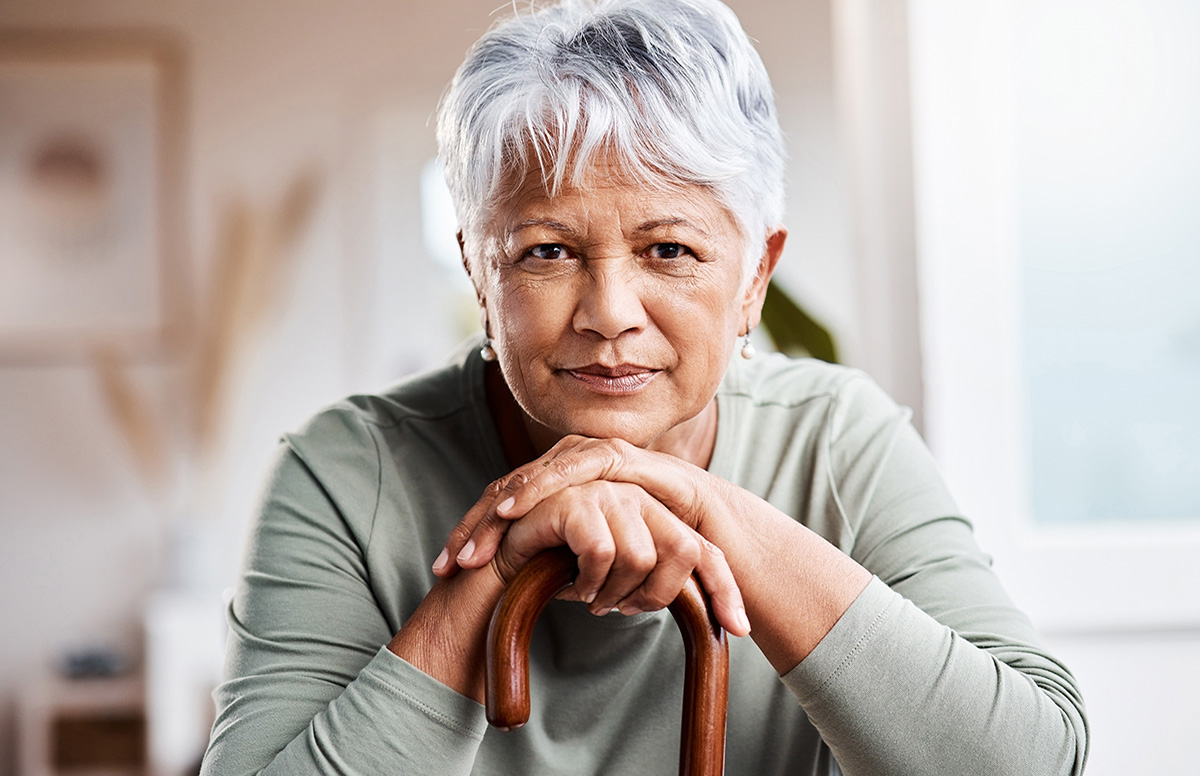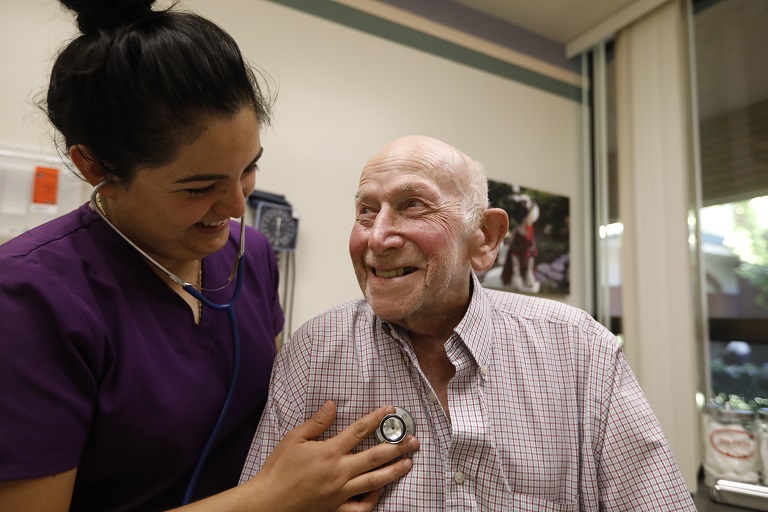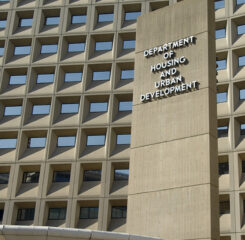Expert Insight: Dr. Caitlin Coyle on Social Isolation
· Question: Can you tell us a bit about your role and the research focus you have at U Mass Boston with your task force?
· Answer:
At U. Mass, the Center I run primarily focuses on working hand in hand with cities and towns to plan for the aging of their population, whatever that looks like. This can include building age friendly environments, and strategic planning, for example. We are on the ground with our community partners. It’s an important premise to how the task force was developed. I also direct the statewide task force to end social isolation and loneliness in aging. In the Fall 2019, we came together because we knew we wanted to address social isolation and loneliness in Massachusetts. We built a coalition around this issue. Social isolation is something we have worked to combat for a long time, long before COVID. The pandemic raised awareness around the issue. We invited colleagues from around the state in advocacy, government, and nonprofit roles to build a network of people who can share their work on this issue.
By Spring 2020, we were doing community listening sessions around the state. There are many diverse environments – rural, city, etc. We held regional community listening sessions on Zoom with more than 350 community organizations and providers. We asked, “how does loneliness show up in your community during the pandemic and what are you doing to respond?” We compiled all we heard into a report called It’s the Little Things. This started our work as a task force.
· Question: Thinking about the task force and its work, what were different roads through the research you had to cross during the pandemic? Was there anything you had to do to change course?
· Answer:
As a gerontologist, I have thought a lot about social isolation and loneliness even before the pandemic. We had to change the way we connect during the pandemic. We could not just implement in-person programming. We wanted to provide ideas to communities on how to address these issues in pandemic-safe ways and keep them thinking about how the epidemic of social isolation and loneliness will continue even after the pandemic. We had to ask, “what are things we should plan to resume in the future?” It made the conversation challenging but we did our best to balance the issue.
· Question: Thinking about your task force’s solutions and the Reach out Mass campaign, I wonder, how can our callers use that as part of their own solutions on this issue?
· Answer:
We heard and we know from research that there’s a lot of stigma around these issues. People don’t love to raise their hand and say they feel lonely and isolated. We wanted to think of ways to erode the stigma. We thought about social health in the same way we think about physical or mental health. We wanted to send the message that it’s OK to think about your social health and assess it, to take action to improve it. We wanted to get that message out into the public conversation. We developed Reach Out Mass with the idea to get the conversation about isolation and loneliness out there and into the media and conversation. We saw the opportunity that the pandemic created; it normalized the sense of isolation, and people became sympathetic because they were also experiencing it themselves. This public awareness campaign included social media as well as local public cable channels. We invited local mayors and city officials to create their own PSAs so that folks would be able to hear the message from people they recognize. We also elevated the message of how important it is to reach out to each other. We also sent local letters to the editor, etc. trying to mobilize our task force to have the message that isolation comes in many phases, and we have to think of the many ways we can care for ourselves.
· Question: Thinking of how your research and work evolved, now, as we move into this next phase and lots of changes with guidance, how do you reconcile the demands of social distancing vs. social isolation?
· Answer:
This question reminds me the difference of social isolation and loneliness. We think of loneliness as a feeling, such as “I feel bad that I don’t have the quantity or quality of relationships that I want to have.” Social isolation we think of as more like, “I lack the opportunity to interact” – an objective experience. Social distancing is an objective barrier, but it’s important that people feel a sense of belonging. We really focused on in the task force with the slogan, “It’s the Little Things” that can have a big impact. It is important to make people feel seen and heard as individuals, within their neighborhood or where they live. It’s important to try to emphasize the little connections, even through a Zoom screen. We must renew the social contract with one another and acknowledge that we are experiencing this together as humans. We encourage through our campaign that people connect with neighbors, wave, write a letter, or call someone you haven’t seen in a while. These things make people feel like other people care. These are meaningful albeit small ways to connect.
· Caller Question (1): Was there a noticeable difference in the number of people who felt socially isolated? Were there more people feeling isolated in the community versus those who live in a nursing home or CCRC?
· Answer:
We didn’t directly access that. One of the more interesting things I did see from the research was across age groups. Older adults were less impacted by the pandemic in feelings of isolation and mental health. Younger generations experienced a greater spike in that regard. For some folks, they were already living isolated lives. The pandemic added to that. I don’t have setting comparisons, but there are different barriers present to be sure.
· Caller Question (2): What were the largest factors that created social isolation?
· Answer:
Transportation and mobility challenges. People were physically unable to get up and out of their homes. We especially see this in rural areas where there isn’t an infrastructure for transportation. The mobility piece is important. There is a real power to changing environments – just being in a different place can be really refreshing and keep people engaged socially. Also, the task force is looking at the built environment. The idea that the way we build our communities and lay them out has real impact on how people can connect with one another.
· Caller Question (3): With social isolation, do technology interventions make it better or worse?
· Answer:
Technology can be helpful to those who otherwise would not be connected. Telehealth and Zoom and other mechanisms can be valuable in terms of access. However, the effects of those interventions do not last as long as in-person connections. There has been research around phone interventions – we see a reduction in loneliness and isolation in the short term, but six months later is has dissipated. People say they wish there was a next step. People like virtual connection but then people want to progress to connection in-person. It’s a very good thing to have technology to connect initially, but anyone who has experienced Zoom fatigue know it’s not a sustainable solution.
In Summary: Key takeaways from Dr. Coyle’s presentation were that social isolation and loneliness, that were known challenges before the pandemic, were only exacerbated and made more prominent in the public eye; interestingly, younger people reportedly struggled more with mental health challenges than older adults. Dr. Coyle’s task force offers important resources that foster social connectedness at a local community level through various media and is championed by elected officials. She drew an important distinction between external, physical barriers to connection – the functional nature of social isolation – and internal feelings of loneliness that can lead to depression. Technology offers only a short-term benefit; there’s no replacement for in-person connection, especially for those combatting feelings of loneliness and isolation. Dr. Coyle generously shared her email address (Caitlin.Coyle@umb.edu) and invited callers to contact her with additional questions or to learn more about the task force’s work.

Most Recommended
October 15, 2025
 Shutdown Week Three: Impact of Ongoing Closure on Affordable Housing
Shutdown Week Three: Impact of Ongoing Closure on Affordable Housing
December 10, 2025
Fiscal Year (FY) Funding 2026
October 07, 2025
Immigrant Workforce Matching Program Brings Workforce Relief
Recently Added
December 19, 2025
House Moves Forward on Affordable Housing Reforms
December 19, 2025
White House Cannabis EO Paves Way for Research, Access
December 19, 2025
LeadingAge Urges DHS to Maintain "Public Charge" Guardrails
December 18, 2025



